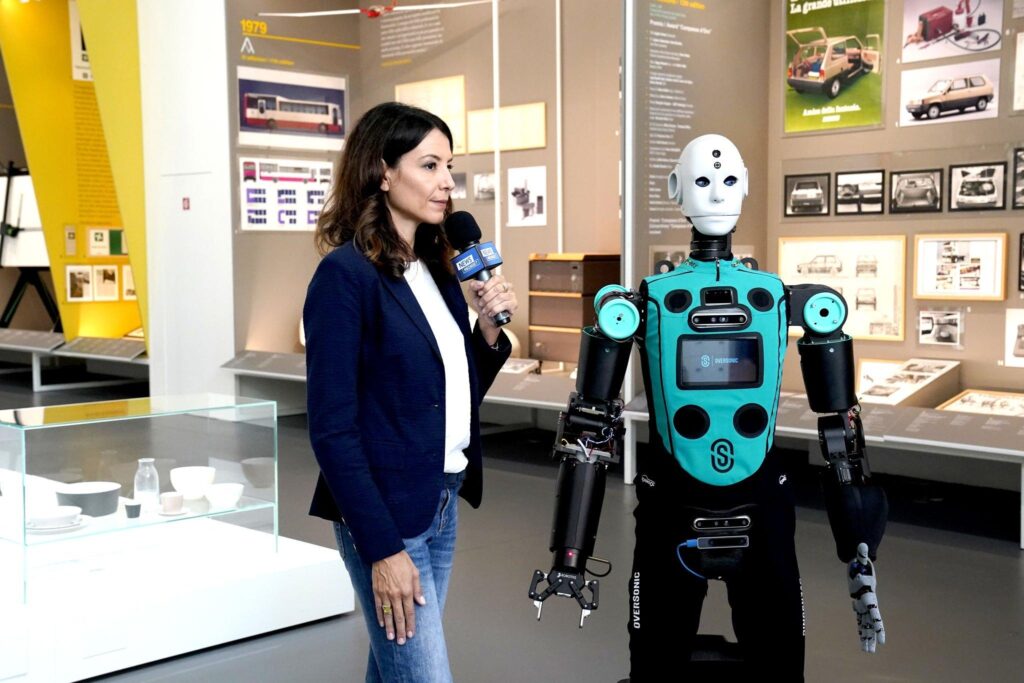Cognitive Robotics Unveiling the Future of Intelligent Automation
Table of Contents
Introduction
Cognitive Robotics, a term gaining rapid momentum in technological spheres, signifies the amalgamation of two cutting-edge fields: artificial intelligence (AI) and robotics. This progressive merger paves the way for groundbreaking innovations, leading us into an era where machines can simulate human cognitive functions. Understanding the nuances and implications of cognitive robotics becomes crucial for comprehending the future of technology.
The Foundations of Cognitive Robotics

Overview of Artificial Intelligence
At the core of cognitive robotics lies artificial intelligence, the driving force behind the cognitive capabilities exhibited by machines. AI functions as the brain of these robotic systems, enabling them to learn, adapt, and make decisions based on complex algorithms.
Machine Learning and Deep Learning
Machine learning and deep learning algorithms form the bedrock of cognitive robotics, facilitating the process of data analysis and pattern recognition. These technologies empower robots to enhance their performance and decision-making abilities over time.
Natural Language Processing
Natural Language Processing (NLP) serves as the bridge between human language and machine understanding. Through NLP, cognitive robots can interpret, comprehend, and respond to human speech, revolutionizing communication between man and machine.
Introduction to Robotics
The historical trajectory of robotics has paved the way for the integration of AI, leading to the birth of cognitive robotics. Understanding the fundamental concepts and milestones in robotics is essential to grasp the evolution of this cutting-edge technology.
Brief History of Robotics
Tracing back to its origins, robotics has witnessed a remarkable journey of advancements and milestones, from its early mechanical roots to the sophisticated, intelligent systems prevalent today.
Key Components of Robotics Systems
Robotic systems comprise various components that collectively contribute to their cognitive capabilities. These include sensory inputs, processing units, actuators, and interfaces that enable robots to interact with their environment.
Cognitive Robotics: The Concept Unraveled

Definition and Scope of Cognitive Robotics
Cognitive robot encompasses the development of intelligent machines that can perceive, learn, and make decisions based on data and sensory inputs. Understanding the scope of cognitive robot sheds light on its potential applications across diverse sectors.
Cognitive Robot vs. Traditional Robotics
Distinguishing cognitive robot from traditional robotics underscores the significant shift from mere automation to the emulation of human cognitive abilities, including perception, reasoning, and problem-solving.
How Cognitive Robotics Mimics Human Cognition
The intricate processes involved in cognitive robot mirror the complexities of human cognitive functions. By replicating human-like learning, reasoning, and decision-making, cognitive robots bridge the gap between machine intelligence and human capabilities.
The Key Technologies Powering Cognitive Robotics

Sensor Technology in Cognitive Robotics
Sensor integration plays a pivotal role in enabling cognitive robots to perceive and interact with their environment. Various sensors, including cameras, touch sensors, and environmental sensors, contribute to the data collection process.
Importance of Sensor Integration
Efficient sensor integration is crucial for enhancing the perceptual abilities of cognitive robots, enabling them to navigate, interact, and perform tasks in dynamic environments with accuracy and precision.
Types of Sensors used in Cognitive Robotics
A diverse range of sensors, including proximity sensors, vision sensors, and tactile sensors, are employed in cognitive robot, each serving unique purposes in facilitating the robots’ interaction and understanding of their surroundings.
Machine Perception in Cognitive Robotics
Machine perception forms the basis for cognitive robots to interpret and analyze data from their environment. It involves the extraction of meaningful information from sensory inputs, paving the way for informed decision-making.
Computer Vision and Object Recognition
Computer vision capabilities empower cognitive robots to perceive and identify objects, enabling them to navigate through complex environments and interact with various entities effectively.
Audio and Speech Recognition
Incorporating audio and speech recognition technologies enables cognitive robots to comprehend and respond to human vocal cues, fostering seamless communication and interaction between machines and humans.
Applications of Cognitive Robotics

Cognitive Robotics in Healthcare
The integration of cognitive robot in the healthcare sector has revolutionized patient care, enabling precise diagnostics, minimally invasive surgeries, and personalized treatment plans, thus significantly improving the overall healthcare experience.
Surgical Robotics and Assistance
Cognitive robots have found remarkable applications in the field of surgery, assisting surgeons in performing complex procedures with enhanced precision, leading to reduced operation times and quicker patient recovery.
Elderly Care and Assistance
In the context of an aging population, cognitive robotics plays a pivotal role in providing assistance and companionship to the elderly, thereby enhancing their quality of life and ensuring their safety and well-being.
Cognitive Robot in Manufacturing and Automation
In the manufacturing sector, cognitive robot has streamlined production processes, optimizing efficiency, and ensuring consistent quality through automated operations and intelligent decision-making.
Enhancing Industrial Processes
The integration of cognitive robots in industrial processes has led to the optimization of workflow management, inventory control, and resource allocation, contributing to increased productivity and cost-effectiveness.
Automated Quality Control
Cognitive robotics facilitates stringent quality control measures in manufacturing units, ensuring that products meet predefined standards and specifications, thus minimizing defects and enhancing customer satisfaction.
Challenges and Ethical Implications in Cognitive Robotics
Ethical Considerations in AI-driven Robotics
The advancement of cognitive robots raises crucial ethical concerns regarding the accountability and moral responsibility of autonomous machines, necessitating the establishment of robust ethical frameworks and regulations.
Ensuring Safety and Privacy
The proliferation of cognitive robotics mandates stringent measures to ensure the safety and privacy of individuals, preventing data breaches and unauthorized access to sensitive information handled by these intelligent systems.
Managing AI Bias and Discrimination
The inherent biases in AI algorithms pose significant challenges in cognitive robots, potentially leading to discriminatory practices and skewed decision-making processes, demanding the implementation of fair and unbiased AI models.
The Uncertainty of Unsupervised Learning in Robotics
The reliance on unsupervised learning methods in cognitive robot poses inherent challenges in the accurate interpretation and analysis of complex data, often leading to unpredictable outcomes and errors in decision-making.
Potential Risks and Precautions
While cognitive robot presents a myriad of opportunities, it also introduces potential risks such as job displacement, security breaches, and the misuse of AI-driven technologies. Proactive measures and comprehensive risk assessment protocols are essential to mitigate these potential threats.
Cognitive Robotics in Everyday Life
Cognitive Robots and Smart Homes
The integration of cognitive robots in smart homes has transformed the way individuals interact with their living spaces, enabling automated control over various home appliances and enhancing overall comfort and convenience.
Personal Assistance and Household Chores
Cognitive robots have simplified everyday tasks by providing personalized assistance, ranging from managing schedules and reminders to performing household chores, thereby easing the burden on individuals and enhancing their productivity.
Security and Surveillance Applications
In the realm of security and surveillance, cognitive robots has reinforced monitoring and protection measures, enhancing the safety of residential and commercial spaces through intelligent surveillance systems and prompt threat detection.
Cognitive Robotics in Transportation
The emergence of cognitive robots has revolutionized the transportation sector, paving the way for the development of autonomous vehicles and intelligent traffic management systems, thereby ensuring safer and more efficient transportation networks.
Autonomous Vehicles and Their Impact
The integration of cognitive robots in autonomous vehicles holds the promise of reducing human errors and enhancing road safety, thereby significantly minimizing the number of accidents and casualties on the roads.
Traffic Management and Safety Enhancements
Cognitive robotics has played a pivotal role in optimizing traffic management systems, improving traffic flow, and reducing congestion through real-time data analysis and intelligent decision-making algorithms.
Future Prospects and Trends in Cognitive Robotics
Integrating Quantum Computing in Cognitive Robots
The integration of quantum computing in cognitive robots marks a significant leap forward in processing power and computational capabilities, thereby unlocking unprecedented potential in the realm of complex problem-solving and data analysis.
Advancements in AI Ethics and Governance
The continuous evolution of AI ethics and governance frameworks is crucial for ensuring responsible and ethical integration of cognitive robotics across various sectors, fostering public trust and confidence in the capabilities of intelligent machines.
Predictions for the Future of Cognitive Robots
Forecasts indicate that cognitive robots will continue to evolve and permeate various industries, leading to a future where intelligent machines coexist seamlessly with humans, amplifying productivity and transforming societal norms.
Cognitive Robotics: The Road Ahead
Implications for Education and Research
The emergence of cognitive robotics underscores the need for comprehensive educational programs and research initiatives focusing on AI, robotics, and interdisciplinary studies, nurturing a skilled workforce equipped to harness the potential of these advanced technologies.
Societal Acceptance and Adoption of Cognitive Robots
Promoting widespread awareness and understanding of cognitive robots is crucial for fostering societal acceptance and encouraging the widespread adoption of these technologies, ensuring their seamless integration into various aspects of human life.
Conclusion
The Ever-Growing Role of Cognitive Robotics
Cognitive robotics stands at the forefront of technological innovation, ushering in an era where machines exhibit human-like cognitive abilities, thereby revolutionizing various sectors and redefining the possibilities of human-machine interaction.
The Impact of Cognitive Robots on Future Technological Advancements
The profound impact of cognitive robots transcends technological realms, shaping the trajectory of future advancements and paving the way for a more interconnected, intelligent, and efficient world.
(FAQs)
Is cognitive robotics the same as artificial intelligence (AI)?
While cognitive robotics incorporates elements of AI, it represents a more complex and interactive form of automation that mimics human cognitive processes.
Can cognitive robots replace human workers in the healthcare sector?
Cognitive robots are designed to assist healthcare professionals and enhance patient care, but their role is complementary to human expertise rather than a complete replacement.
What are the key skills individuals need to thrive in a cognitive robotics-driven future?
Skills such as critical thinking, problem-solving, and adaptability will be crucial, along with a strong foundation in technology and data analysis.
How can companies ensure the ethical use of cognitive robotics in their operations?
Implementing transparent and accountable decision-making protocols, prioritizing data privacy, and fostering a culture of responsible innovation are essential steps.
What measures can be taken to address public concerns about job displacement due to cognitive robotics?
Proactive measures, such as investing in retraining programs, fostering interdisciplinary collaboration, and creating new job roles that complement cognitive robotics, can help mitigate job displacement concerns.
Get Access Now : Best House Robots Modern Living Revolutionizing

